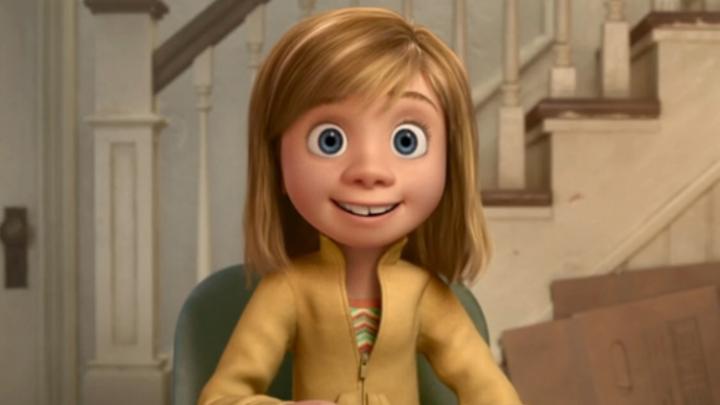By Gaby Lohner
“Inside Out” is 2015’s most popular animated film. In a market that has been recently dominated by a “Frozen”-producing Disney, this film is Pixar’s trip back to the awards shows. In the 88th Academy Awards, “Inside Out” is nominated for both Best Writing, Best Original Screenplay, and Best Animated Feature Film of the Year. After being shut out of the latter for two straight years, Pixar is ready to make their Oscars comeback with a widely speculated win for Animated Feature Film of the Year.
This movie not only boasts a talented cast including Amy Poehler, Bill Hader, and Phyllis Smith, but also an Oscar winning director in Pete Docter. Docter directed “Up,” one of only three animated movies to have ever been nominated for Best Picture. With Inside Out, Pixar and Docter have created a beautiful film that captures the complexity of human emotion and condenses it in to a colorful children’s movie that is likewise entertaining to audiences of all ages.
The film follows Riley, a bubbly, hockey-loving 11-year old, through her move from Minnesota to San Francisco. But we get to follow more than just Riley through her journey – we are given insight in to her brain, where five emotions, Joy, Sadness, Disgust, Anger, and Fear, control her experiences and reactions. The five emotions are portrayed exactly as one would expect. Joy is gold and bounces around in a green dress; Disgust is a green valley-girl who scoffs at calling Riley’s parent’s “cool”; Fear is a purple, perpetually nervous man; Sadness is a blue, chubby, quiet woman who walks with her feet dragging and her head down; and Anger is a stout, red man in a suit whose head will combust in to flames when provoked.
The movie begins with an explanation of how the emotions control Riley’s brain. It includes a control room with a button-filled panel, marbles that contain Riley’s most important “core memories,” and a system of give-and-take between the emotions in reaction to Riley’s daily life. Joy is the captain of the ship, constantly checking that one of her coworkers doesn’t get too much influence on Riley’s feelings. After the introductions, we head in to Riley’s life, where the story begins.
One unique element of this film is that we get to see what causes Riley’s moods, the cogs in her brain working. When Riley’s dad takes a job in San Francisco, we get to see her emotions react to her new surroundings. Inside of the brain, Riley’s problems start when Sadness gets bored and decides to meddle with the core memories. She manages to lose them all, shutting down all of the “Islands of Personality,” which comprise the different facets of Riley’s disposition. These include Goofball Island, Family Island, Honesty Island, and Hockey Island, among others. In short, they are what makes Riley, Riley. In an attempt to fix the damage that is caused, Joy slogs Sadness into Riley’s mind, leaving Fear, Disgust and Anger to govern Riley’s mind – not a highly desired mix of emotions.
Throughout Joy and Sadness’ journey, the main theme of the film becomes present in the role that Sadness plays. Sadness understands the complexities of Riley’s brains in a way that Joy doesn’t, so she takes the reins in their escape attempt. This is where the viewer begins to understand that Sadness is in fact an important emotion. While before she seemed like a nuisance to Joy and Riley’s emotional process, she now becomes the difference between success and failure in Joy’s mission. These two emotions working together emulates the coexistence of these sentiments in every person’s life.
Joy and Sadness end up on an Alice in Wonderland-esque joyride. After meeting up with Riley’s abandoned imaginary friend, Bing Bong, they travel through every part of the mind: Abstract Thought, where they are artistically transformed in to characters that could have come straight out of Picasso’s Guernica; Imagination Land, where we meet Riley’s dream boyfriend; Dream Production, where Riley’s dreams are created like Hollywood movies, complete with famous stars and security guards; and the Subconscious, where the characters end up in jail. Eventually, through the sacrifices of Bing Bong and Sadness, Joy makes it back to the control room to save the day.
Though the animation is a work of art, full of emotion-invoking colors that melt into greys to mirror Riley’s moods, the movie’s real strength lies in its humanization and simplification of such intricate human emotions. Each character has a specific personality that accurately illustrates the emotion they are associated with, and everything from their outfits to their off-hand comments completely match the feelings they represent. The movie manages to make emotions kid-friendly, a daunting task. Throughout this intense journey, kids and parents alike can learn something about a child’s mind. The movie was created with the consultation of affective scientists, and it has been discovered that at the age of eleven is when sadness becomes a more prominent emotion in a child’s life.
An important take away for viewers of all ages is that being sad is natural, being sad is healthy. Without knowing sadness, it is impossible to know true happiness. Riley gets stuck in an off mood for a couple of weeks, but that doesn’t mean that there is something wrong with her; Riley needs Sadness to have a healthy transition from Minnesota to California. In a world where emotions are hyper-analyzed by parents, teachers, and even individuals themselves, “Inside Out” reminds us all that humans are not easy to understand, and that everyone experiences things in unique ways. Pixar hit a homerun with this movie, turning a serious topic in to an understandable story, and it is highly anticipated that “Inside Out” will win a prestigious gold statue on February 28.

